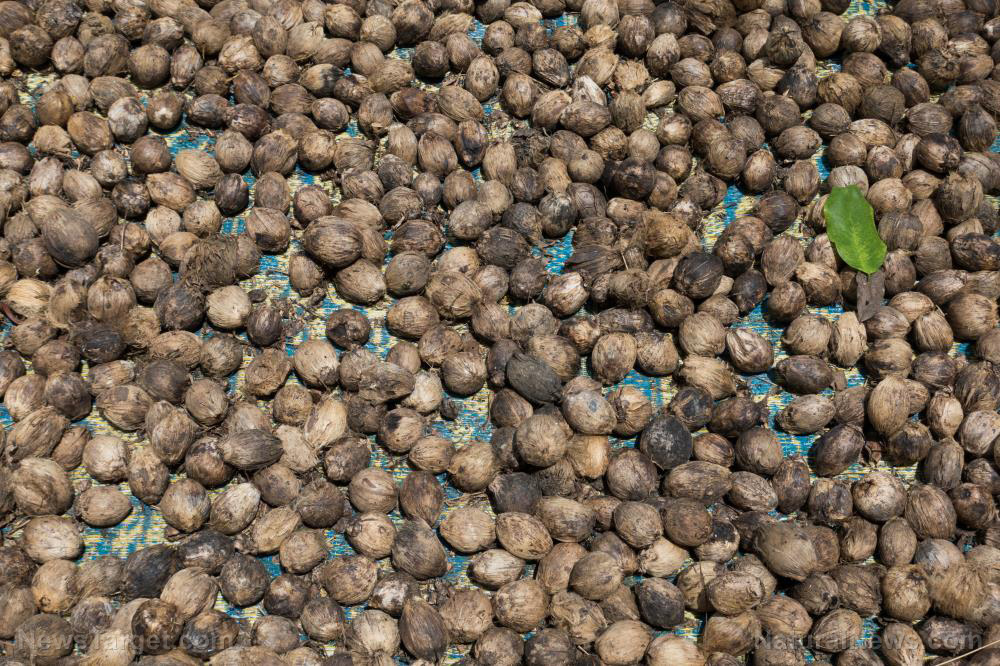Chewing areca nut can prevent cancer
01/11/2019 / By Zoey Sky

Since ancient times, people from certain locations such as Africa and Asia have customarily chewed areca (betel) nuts to strengthen community ties. According to a study, the areca nut, which comes from the areca palm (Areca catechu), may also possess anti-cancer properties.
The study, which used mice models to test the anti-cancer properties of the nuts, was published in the journal Molecular Cell.
Proving the anti-cancer properties of areca nuts
The habit of chewing areca nuts can help clean and strengthen teeth, but the study has proven that green and yellow areca nuts also contain an active substance called arecoline. Study findings also suggest that the nuts may help protect against the Warburg effect, which refers to a condition where cancer cells grow rapidly. (Related: Emerging research shows that a natural citrus fruit extract can prevent cancer growth.)
The researchers explained that arecoline substances in areca nuts can help inhibit the growth of cancer cells, especially in conditions such as leukemia and lung cancer. Based on study findings, after the mice that were previously given cancer cell leukemia and lung cancer were administered an injection of arecoline substances, cancer growth significantly slowed down.
The team of researchers said, “Uniquely, these arecoline substances do not affect the growth of normal blood cells.” They added that the areca nuts must be studied further to verify the current findings.
The researchers concluded that arecoline is a “powerful and selective anti-cancer substance” and that it can potentially be used to develop a natural and effective cure for cancer.

Other health benefits of areca nuts
Aside from its anti-cancer properties, studies have shown that areca nuts offer other benefits.
- Dry mouth relief. People who chew betel nut often produce large amounts of saliva. InteliHealth noted that this can benefit individuals with dry mouth caused by health conditions like diabetes and Sjogren’s syndrome.
- Stroke recovery. Areca nut extract can help promote stroke recovery. InteliHealth also reported that patients who took betel nut extract had improved bladder control, muscle strength, and speech.
Fast facts on areca nuts
Areca nuts, which are also known as betel nuts, comes from the areca tree.
- The areca tree is a feathery palm that can reach at least 1.5 meters in height. Areca trees are widely cultivated in parts of Africa and other areas such as Bangladesh, the East Indies, India, Japan, the Philippines, the southern China, and Sri Lanka.
- The tropical palm trees bear fruit year-round.
- Areca nuts can be used fresh, dried, or cured by boiling, baking, or roasting. Betel quid is the term for a mixture of areca nut, tobacco, and lime that is wrapped in the leaf of the betel vine.
- Areca nut is also called paan, paan-gutkha pinlang, pinang, and supari.
- The nuts are astringent and pungent with a bitter, salty, spicy, and sweet taste.
- Areca nuts were traditionally used to beautify the mouth, eliminate bad odors, expel wind, induce purification, kindle passion, kill worms, and remove phlegm.
- Areca nuts can stimulate the central nervous system and they are often used in the same way as caffeine or tobacco.
- The arecoline in the nuts causes some of the effects of betel quid chewing like alertness, euphoria, increased stamina, a sense of well-being, and salivation.
- Chewing areca nuts can help stimulate the flow of saliva, which can then promote better digestion.
- The betel nut can also be used to stimulate the appetite.
You can read more articles about areca nuts and other natural anti-cancer treatments at Cancer.news.
Sources include:
Submit a correction >>
Tagged Under:
areca, Areca catechu, areca nuts, areca palm, arecoline, Betel nut, cancer risk reduction, leukemia, lung cancer, men's health, natural cures, Warburg effect, women's health
This article may contain statements that reflect the opinion of the author




















